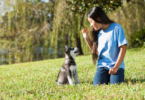Did you know that over 50% of dogs in America are obese, leading to serious health issues like cardiovascular disease? This startling statistic highlights the importance of proper dog care to ensure your pet leads a healthy, happy life. As a responsible pet owner, you want the best for your furry family member, but navigating the world of dog care can be overwhelming.
This comprehensive guide is here to help. Drawing from trusted sources, including veterinarians and experienced pet experts, we’ve put together expert advice covering everything from nutrition and grooming to training and safety. Whether you’re a new dog parent or a seasoned one, you’ll find step-by-step tips tailored to your needs.
Our guide balances scientific detail with friendly guidance, making complex information accessible. We cover seasonal care, daily routines, and proactive health measures to keep your dog thriving. From understanding the importance of regular vet visits to managing flea and tick prevention, we’ve got you covered.
By the end of this guide, you’ll be equipped with the knowledge to make informed decisions about your dog’s health and well-being. Let’s dive in and explore how you can give your dog the best life possible.
Getting Started with Your Dog's Wellbeing
Understanding your dog’s unique needs is the first step toward ensuring their health and happiness. Every dog has a distinct personality, breed-specific traits, and energy levels that influence their care requirements. For instance, a high-energy breed like a Border Collie needs more exercise compared to a laid-back Basset Hound.
Understanding Your Dog's Unique Needs
A daily routine is essential for your dog’s well-being. This routine should include feeding times, exercise, and socialization. Feeding your dog twice a day at consistent times helps maintain their metabolism and prevents overeating. Exercise needs vary by breed but aim for at least 30 minutes of activity daily, such as walks or playtime in the park.
Establishing a Routine with Vet Visits
Regular vet visits are crucial for early detection of potential health issues. Most dogs need at least one vet visit per year, though puppies and older dogs may require more frequent check-ups. Your veterinarian can tailor advice to your dog’s specific needs, from diet to exercise and even mental stimulation.
By understanding your dog’s unique needs and maintaining a consistent routine, you set the foundation for a long, healthy life. Regular vet visits and a well-structured daily schedule help prevent issues before they arise, ensuring your pet stays happy and thriving.
Essential Dog Care Tips for a Healthy Pet
Proper nutrition is the cornerstone of a dog's health and well-being. A balanced and vet-approved diet tailored to your pet’s age, breed, and activity level ensures they receive the necessary nutrients for optimal health. This approach helps prevent health issues and supports overall vitality.
Balanced Nutrition and Feeding Guidelines
Feeding your dog the right amount is crucial. Over 50% of dogs in the U.S. are obese, leading to serious health problems like diabetes and heart disease. Portion control is key to preventing overeating and maintaining a healthy weight.
A well-planned diet improves digestion and energy levels. High-quality ingredients ensure your dog gets the nutrients they need. Always consult your veterinarian before adding supplements to their meals.
Consistent feeding times help establish a routine, which is good for your dog's digestion and overall behavior. Reading pet food labels is important to ensure you're choosing the best options for your dog.
Consulting a veterinarian provides personalized advice for your dog's specific needs. As your dog grows, their dietary needs may change, so regular check-ins with your vet are essential to keep them healthy and thriving.
Grooming, Dental Health, and Personal Hygiene
Regular grooming is essential for maintaining your dog's overall health and appearance. It not only keeps their coat clean and shiny but also helps prevent skin issues and infections. A well-groomed dog is happier and healthier, making grooming a vital part of their care routine.
Brushing, Bathing, and Coat Care Techniques
Proper brushing is the first step in any grooming routine. Use a brush designed for your dog's coat type to remove loose hair and prevent matting. Regular brushing also helps distribute natural oils, keeping their coat healthy and vibrant. Bathing should be done as needed, using shampoos formulated for dogs to maintain their skin's natural pH balance. Over-bathing can strip their coat of essential oils, so it's important to find the right balance.
When it comes to bathing, consider your dog's lifestyle and breed. Active dogs or those that spend a lot of time outdoors may need more frequent baths, while indoor dogs might only need a bath every few months. Always rinse thoroughly to remove all soap residue, and follow up with a conditioner if your dog has long hair.
In addition to brushing and bathing, don't forget to check sensitive areas like the ears. Use a cotton ball or soft cloth to gently remove dirt and wax, but avoid inserting anything deep into the ear canal. Regular grooming sessions also provide an opportunity to inspect for any signs of irritation or infection, allowing you to address issues early on.
Maintaining Oral Health with Regular Dental Routines
Dental health is a critical component of your dog's overall well-being. Poor oral health can lead to bad breath, gum disease, and even systemic infections. The good news is that many of these issues can be prevented with a consistent dental care routine.
Brushing your dog's teeth is one of the most effective ways to maintain their oral health. While daily brushing is ideal, even a few times a week can make a significant difference. Use a toothbrush and toothpaste specifically designed for dogs, as human products can be harmful. Start slowly to help your dog get used to the process, making it a positive experience with praise and rewards.
In addition to brushing, there are other ways to support your dog's dental health. Dental chews and toys can help remove plaque and tartar, while dental wipes provide a quick cleanup when brushing isn't possible. However, these should complement, not replace, regular brushing. Your veterinarian can also provide professional cleanings to ensure your dog's teeth and gums stay healthy.
Bad breath isn't just unpleasant—it can be a sign of underlying dental issues. If your dog's breath doesn't improve with regular brushing, it's important to have them checked by a veterinarian. Early detection of dental problems can prevent more serious and costly issues down the line.
Consistent grooming and dental care not only improve your dog's health but also strengthen the bond between you and your pet. By incorporating these routines into your daily or weekly schedule, you can help your dog live a longer, happier life.
Developing Effective Training and Behavioral Habits
Why is structured training essential for your dog? It lays the groundwork for a lifelong partnership built on trust and clear communication. Positive reinforcement is a powerful approach that fosters healthy habits and strengthens your bond with your pet.
Implementing Positive Reinforcement Strategies
Positive reinforcement focuses on rewarding desired behaviors immediately. Use treats, praise, or a clicker when your dog performs an action correctly. For example, make your dog sit before meals to encourage good manners. Consistency is key—ensure all family members use the same commands and rewards to avoid confusing your dog.
Inconsistent training can lead to confusion. Correct negative behavior promptly and positively to maintain trust. This approach helps your dog understand what is expected and builds a trusting relationship.
Creating Consistent House Rules
Clear house rules provide structure and reduce stress for your dog. Establishing a daily routine for training sessions helps your dog anticipate and prepare. Incorporate training into playtime or daily activities to make learning enjoyable and prevent boredom.
Structured training not only improves behavior but also enhances the bond between you and your dog. By making learning fun and consistent, you create a strong foundation for a happy, well-behaved pet.
Household Safety and Puppy-Proofing Essentials
Creating a safe environment for your pet is crucial to prevent accidents and ensure their well-being. Just like with human babies, puppies are naturally curious and love exploring their surroundings, which can sometimes lead them into trouble.
Securing Hazardous Items and Chemicals
One of the most critical steps in puppy-proofing your home is storing hazardous items out of reach. This includes cleaning supplies, medications, and toxic substances like antifreeze. These items can be deadly if ingested, so keeping them in high cabinets or locked containers is essential. Additionally, securing trash cans with tight lids can prevent your pet from rummaging through garbage and potentially ingesting harmful materials.
Designing a Safe Space for Your Dog
A designated safe space for your dog can provide comfort and security, especially during stressful events like thunderstorms or fireworks. This area should be quiet, comfortable, and equipped with your dog's favorite toys and water. Adding a familiar blanket or bed can also help your dog feel secure and reduce anxiety.
Regular checks around the house to identify potential hazards, such as loose wires or toxic plants, are also important. By taking these steps, you can create a safer environment for your pet and reduce the risk of accidents. Remember, safety is an ongoing process as your dog grows and their needs change.
Seasonal Care: Winter Protection and Summer Cooling Strategies
As the seasons change, so do your dog's needs. Adjusting their care routine to match the weather ensures their comfort and safety year-round.
Winter Paw Care and Protective Accessories
Cold weather can be harsh on your dog's paws. Ice, salt, and freezing surfaces can cause irritation and discomfort. Moisturizing your dog's paws regularly helps protect them from cracking and dryness.
For extra protection, consider using dog booties, especially for breeds sensitive to cold. Sweaters can also provide warmth during outdoor walks. After winter walks, wipe your dog's paws to remove salt and ice, preventing burns and irritation.
Keeping Your Dog Cool with Shade and Hydration
Summer heat requires constant hydration and shade. Ensure your dog always has access to fresh water and a cool, shaded area. Limit walks during peak heat hours (usually between 12 PM and 4 PM) to prevent overheating.
Monitor for signs of heat exhaustion, such as heavy panting, drooling, or lethargy. If you notice these symptoms, move your dog to a cooler spot and offer cool water or ice cubes. Cooling mats and damp towels can also help lower their body temperature.
Regular grooming in summer helps reduce coat density, making your dog more comfortable. However, avoid shaving their coat completely, as it protects against sunlight.
Exercise, Play, and Mental Stimulation for Vibrant Health
Exercise and play are vital for your pet's physical and mental well-being. Regular activity helps maintain a healthy weight, boosts energy levels, and prevents boredom-related behaviors.
Incorporating Daily Walks and Outdoor Adventures
Daily walks are essential for your pet's fitness and mental alertness. A 30- to 60-minute walk each day, depending on your pet's breed and health, can make a significant difference. Outdoor adventures, like hikes or visits to the park, offer new environments for exploration and socialization. These activities not only provide physical exercise but also stimulate your pet's mind, reducing the risk of behavioral problems.
Engaging in Interactive Games and Puzzle Toys
Interactive games and puzzle toys challenge your pet's mind and keep them entertained. Activities like fetch or hide-and-seek encourage physical movement and mental engagement. Puzzle toys filled with treats can keep your pet occupied, reducing boredom and destructive behavior. These tools are especially useful on rainy days when outdoor activities are limited.
Choosing the right toys based on your pet's age and energy level ensures they stay engaged. For example, high-energy breeds may benefit from vigorous play, while older pets might prefer gentler activities. Consistent exercise routines not only improve physical health but also enhance mental stimulation, leading to a happier, healthier pet.
Final Thoughts for a Lifetime of Happy Tails
As you embark on this journey of nurturing your furry friend, remember that every decision you make today shapes their tomorrow. A well-balanced diet, regular vet check-ups, and consistent exercise routines are the pillars of a healthy, happy life for your pet.
Stay proactive by adapting to your dog's changing needs as they grow. Whether it's adjusting their diet or modifying playtime, flexibility is key to ensuring their well-being. Being informed and cautious helps prevent potential issues, enhancing their quality of life.
Every pet owner has the power to create a nurturing environment. By fostering a safe space and maintaining open communication, you contribute to your dog's happiness and safety. Share your experiences and tips with fellow pet parents to build a supportive community.
Here's to a future filled with joy, health, and countless happy tails. Together, we can ensure our pets live their best lives, surrounded by love and care.











Leave a Comment